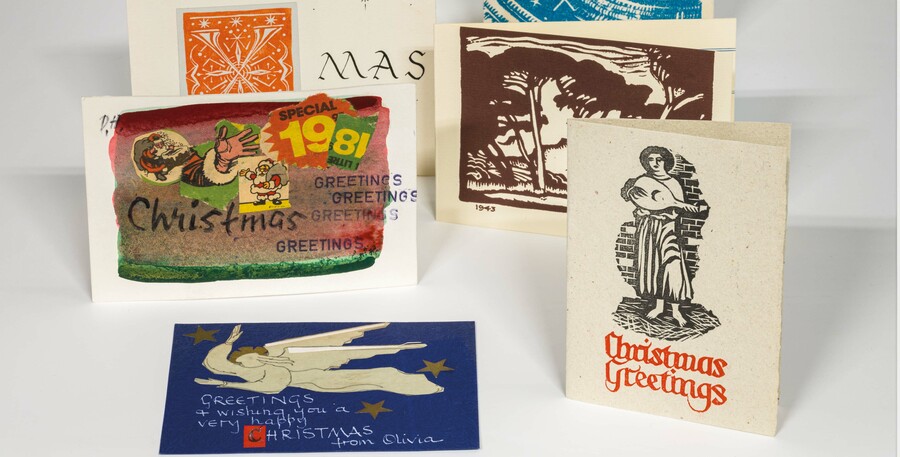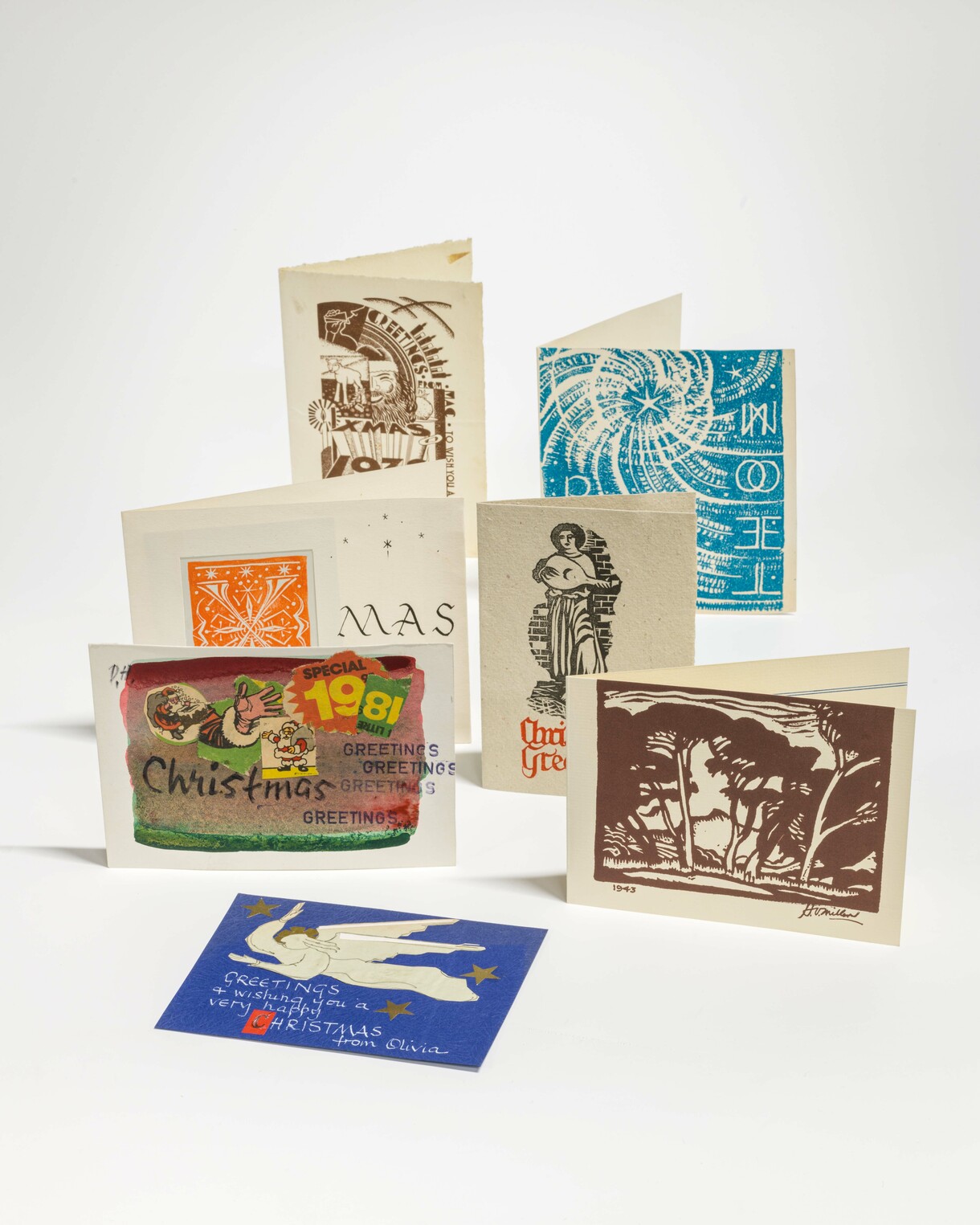Opening the Archives

Amongst the regular books, artist books and rare books, the Robert and Barbara Stewart Library and Archives also contains a treasure-trove of letters, diaries, photographs, newspaper cuttings, videos and more. These fascinating objects shine a light on the lives and careers of many of the artists in our collection, telling us how they developed their works, how they related to their contemporaries, even where they went on their holidays. They are used a good deal by curators and researchers – and you can see some of them in our current exhibitions He Kapuka Oneone and One O’Clock Jump – but they usually live well out of sight.
Until now that is. This November we opened a brand- new display area devoted to these treasures, and instead of supporting other exhibitions, they take centre stage in a gallery space designed just for them. There is a goldmine of material to draw on, much of it never seen before, so every few months we will refresh what’s on display.
Credit must go the generous patrons of the library and archives, Robert and Barbara Stewart, who have supported the facility since 2002. It must also go to the members of our staff who have built up the collection over many years, former senior curator Neil Roberts chief among them. The papers of Bill Sutton, Olivia Spencer Bower, the Canterbury Society of Arts and our predecessor institution the Robert McDougall Art Gallery, were all assembled under his careful eye.
The Sutton archive contains information and maps of his travels; plans and photographs of his house; and thousands of photographs of him, his friends and the Waitaha Canterbury landscape he painted so memorably. Olivia Spencer Bower’s photograph albums and diaries of her first trip to Europe are equally fascinating and offer quite profound insights into her ambitions and sorrows – as well as casting light on the minutiae of travel in the 1920s and 1930s.
Many artists earned their living not from creating large oil paintings and staging fabulous exhibitions, but by working as illustrators. Publications such as the School Journal and New Zealand Listener, as well as the daily newspapers, needed large numbers of line illustrations and many well-known Aotearoa New Zealand artists worked in this field. The story of Christchurch Art Gallery Te Puna o Waiwhetū itself is also told in our archives: how our building was conceived, designed and built, and how it survived the earthquake experience. Both of these are stories that will be told in future exhibitions.
Archival collections are notoriously slippery to describe – “twenty-one boxes of miscellaneous papers” is a fair place to start, but is not really adequate to describe the treasures within. There is no alternative to simply opening each box and making a list of every item, identifying each one with a number and ensuring it is safely and suitably enclosed. People, places, dates, sizes, materials, condition and so on are organised in spreadsheets, allowing us to carry out complex searches, and manage and share data in an orderly way. A dozen or more student interns, mostly from the University of Canterbury, have helped do this work over the last twenty years. Without their contribution we simply would not know what some of our archival collections contain.
In the end though, we still want more! Our archives very much reflect the past and our collecting traditions since we opened, as the Robert McDougall Gallery, in 1932. We are actively seeking archival collections that relate to Canterbury art and we would love to broaden the scope of the archival collections to reflect more closely the breadth of our art collection.
But for now we really hope you enjoy the exhibitions that will appear in our new Archive Lounge. The first, which opened in November is of Christmas cards created by well-known and distinguished local artists over many years. Some are funny, some poignant and all offer festive greetings. What is more, many of them are themselves miniature works of art.








